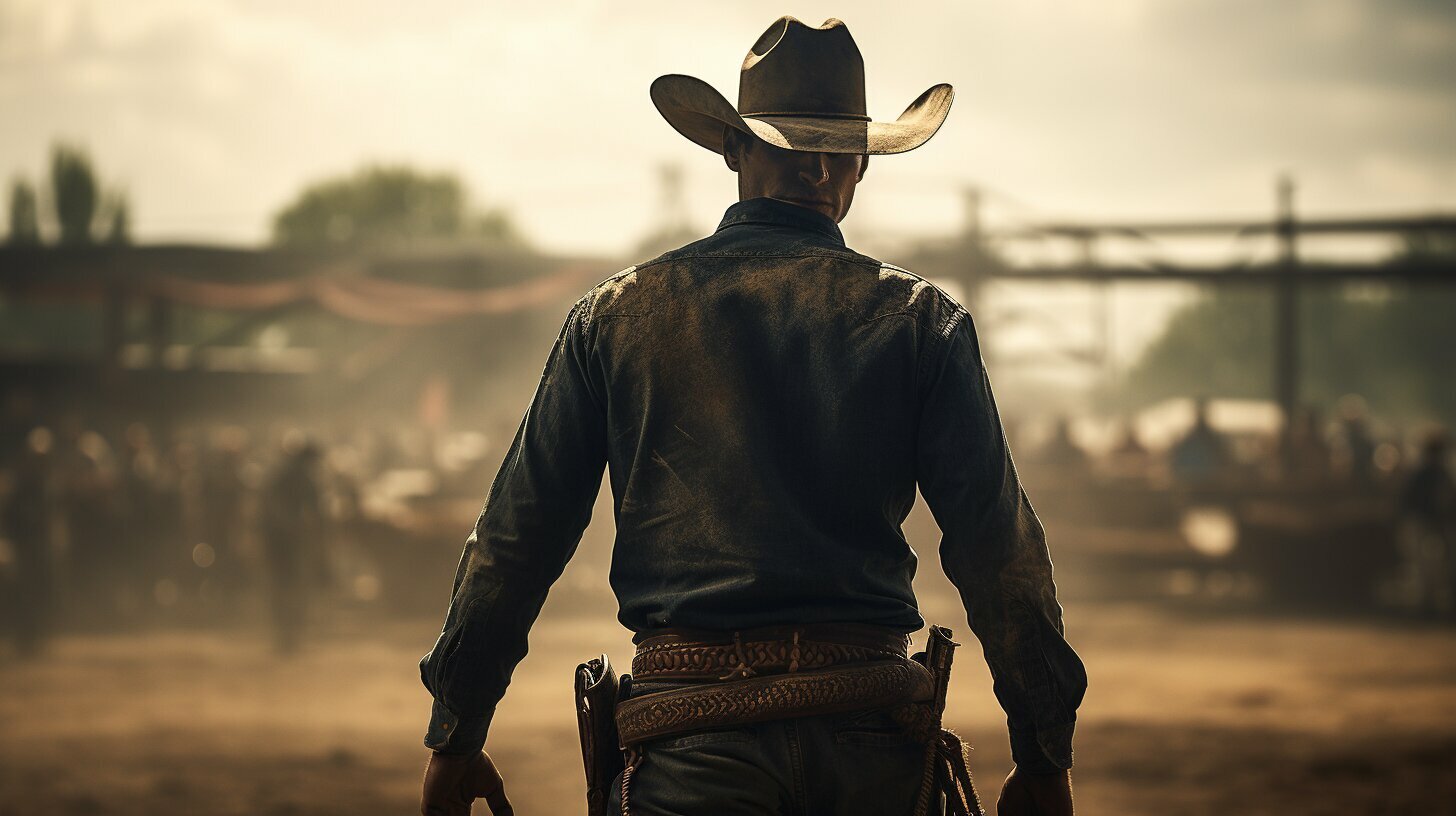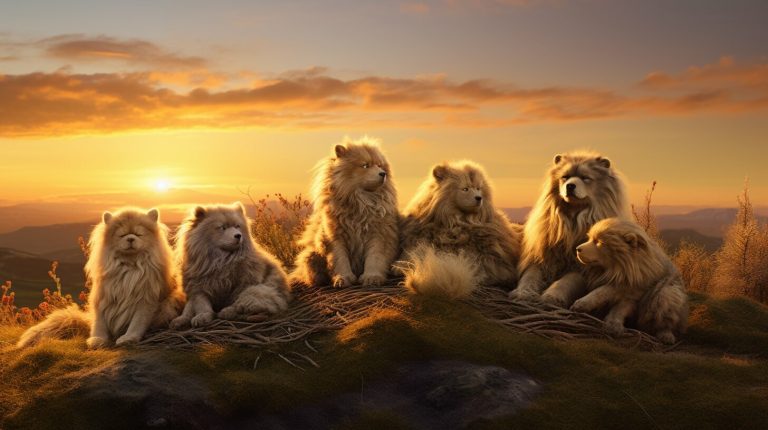Uncovering the Mystery: Why Do Cowboys Wear Spurs?
Cowboys have long been associated with wearing spurs, but have you ever wondered why? In this article, we will delve into the fascinating history, practicality, and symbolism behind the iconic cowboy spurs.
Key Takeaways:
- Spurs are metallic devices attached to the heel of a rider’s boot.
- They serve as a tool for communication between the rider and their horse.
- Spurs allow the cowboy to give subtle cues to the horse for various maneuvers.
- Wearing spurs represents a rider’s skill level and status in cowboy culture.
- Caring for spurs is important to prevent rusting, and they are traditionally attached to cowboy boots using spur straps.
The Practical Purpose of Spurs
Cowboy spurs serve a practical purpose in enhancing communication between the rider and their horse, allowing for precise cues and maneuvers. These metallic devices, attached to the heel of a cowboy’s boot, enable the cowboy to give subtle signals to their horse, guiding them to perform specific actions. By applying a gentle press or a slight heel swivel, the cowboy can communicate to the horse to move forward, turn, slow down, or execute complex maneuvers.
Modern cowboy spurs come in various designs, each tailored to the specific needs of the rider. Some common types include the rowel spurs, which feature a spinning wheel-like attachment with pointed edges, and the bumper spurs, which have a smooth surface for gentler cues. Additionally, the shank length and curvature of the spur can vary, providing different levels of leverage and control. These variations allow cowboys to adapt their spurs to different riding styles and environments.
While it is crucial to use spurs responsibly and with proper training, they are designed to communicate with the horse without causing harm. When used correctly, the spurs provide a gentle and precise cue for the horse, fostering a harmonious and efficient partnership between rider and steed. The rider’s skill in using spurs effectively is a testament to their experience and expertise in horsemanship.
| Type of Spurs | Description |
|---|---|
| Rowel Spurs | Feature a spinning wheel-like attachment with pointed edges for subtle cues and movements. |
| Bumper Spurs | Have a smooth surface for gentler cues and are often favored by riders who prioritize a softer touch. |
| Mexican Spurs | Known for their large, ornate rowels and intricate designs, they are popular in traditional Mexican horsemanship. |
Proper care and maintenance of spurs are essential to ensure their longevity and functionality. Cowboys often attach spurs to their boots using spur straps, which can be adjusted for a secure fit. Regular cleaning and polishing of the spurs help prevent rusting and maintain their appearance. A cowboy’s spurs hold a significant meaning within the cowboy culture, symbolizing their skill level and status as a rider. Earning spurs is a moment of pride and acknowledgement, reflecting years of experience and dedication to horsemanship.
Tracing Back the History of Cowboy Spurs
To understand why cowboys wear spurs, we must travel back in time to explore the origins of this essential gear in the rich history of the American West. Cowboy spurs have a fascinating history that dates back to the early days of cattle ranching and horsemanship.
In the late 1800s, as cowboys rode the open range and worked long hours tending to cattle, they needed a means to control their horses effectively. This led to the invention of spurs, which quickly became a staple in their attire. Traditional cowboy spurs were made of metal, typically silver or iron, and featured a spinning rowel on the end, resembling a small wheel with pointed spokes.
Types of Traditional Cowboy Spurs
| Spur Type | Description |
|---|---|
| Rowel Spurs | Designed with a rotating wheel-like rowel |
| Ball Spurs | Featuring a ball-shaped end instead of a spinning rowel |
| Ranch Spurs | Characterized by a long shank and a large rowel |
These spurs served practical functions, allowing cowboys to steer their horses with precision and communicate effectively in the demanding environment of the Western frontier. However, spurs also became a symbol of status and skill among cowboys. The more ornate and finely crafted the spurs, the more experienced and respected the rider was considered to be.
“A cowboy’s spurs are more than just a tool; they represent our connection to the land, our horsemanship, and our heritage.” – Anonymous Cowboy
Today, cowboys continue to wear spurs as a nod to tradition and a connection to their cowboy roots. While many aspects of cowboy culture have evolved, the significance of spurs remains unchanged. Whether they are competing in rodeos, working on ranches, or simply enjoying the thrill of riding, cowboys proudly wear their spurs, honoring the history and legacy of the American cowboy.
Summary:
Cowboy spurs have a rich history that dates back to the early days of cattle ranching and horsemanship in the American West. Traditional cowboy spurs are made of metal and feature a spinning rowel on the end. They serve as a practical tool for communication between the rider and the horse, allowing for precise cues and refined control. Wearing spurs is not only a practical necessity but also a symbol of a cowboy’s skill level and status. Today, cowboys continue to wear spurs as a way to honor tradition and maintain a connection to their cowboy heritage.
Symbolism and Significance in Cowboy Culture
Beyond their practical use, spurs hold deep symbolism in cowboy culture, signifying a cowboy’s expertise, dedication, and connection with their horse. Cowboys view their horses as partners, and the spurs serve as an extension of their communication. The ability to use spurs skillfully demonstrates a cowboy’s mastery and understanding of their mount.
Spurs are earned through experience and are worn as a badge of honor. As cowboys gain proficiency in riding, roping, and working cattle, they are awarded spurs to acknowledge their achievements. It is a proud moment and a symbol of respect within the cowboy community.
In addition to skill, spurs also highlight a cowboy’s dedication. The care and maintenance of spurs are essential. Regular cleaning and polishing are not just practical measures to prevent rusting, but also a reflection of the pride and respect cowboys have for their tools. Well-kept spurs convey a sense of professionalism and demonstrate the attention to detail that cowboys embody.
The connection between cowboy and horse is fundamental, and spurs serve as a visible reminder of this bond. Cowboys spend countless hours working with their horses, building trust and establishing a language of cues. The use of spurs is a subtle and nuanced communication that reinforces the unique partnership between rider and steed.
The Symbolic Power of Spurs
The significance of spurs in cowboy culture cannot be overstated. Much more than simple accessories, they encapsulate the values and traditions that define the cowboy way of life. With their rich symbolism and historical significance, spurs remain an enduring emblem of the cowboy’s prowess, honor, and unwavering bond with their trusty steed.
Table 1: Types of Spurs
| Type | Description |
|---|---|
| Ranch or Jingle Bobs | Large, rowelled spurs with rounded edges |
| Roping or Bull Riding | Heavy-duty spurs with long, sharp rowels for added grip |
| Reining or Cutting | Short, pointed rowels for precise communication |
| Mounted Shooting | Spurs with a small rowel and smooth edges for quick movements |
How Do Spurs Work?
Understanding the mechanics of how spurs work involves unraveling the intricate communication system between a cowboy and their equine partner. Spurs are metallic devices attached to the rider’s boot heel, serving as a tool for precise cues and signals to the horse. Contrary to popular belief, spurs are not meant to cause harm but are designed for gentle and refined communication.
When a cowboy wears spurs, they can give subtle cues to the horse by using different techniques. For instance, a gentle press of the rider’s heel against the horse’s side can signal the horse to move forward, while a slight swivel of the heel can indicate a turn. These subtle movements are important for guiding the horse’s actions, whether it’s slowing down, speeding up, or performing specific maneuvers.
The key to using spurs effectively is to maintain a harmonious partnership with the horse, where the rider’s intentions are communicated clearly without causing unnecessary discomfort. Proper technique and understanding the horse’s responsiveness are essential in achieving this balance.
It’s worth noting that spurs are not a one-size-fits-all tool. There are various types of spurs, each designed for different purposes and styles of riding. From traditional Western spurs with rowels to more modern variations, the choice of spurs depends on the rider’s preference and the specific needs of the riding discipline.
| Type of Spurs | Description |
|---|---|
| Western Spurs | Featuring a rotating wheel called a rowel, which rubs against the horse’s side to give cues |
| Spur Straps | Leather straps that secure spurs to the cowboy boots |
| Bumper Spurs | Designed with a rubber or plastic ball at the end, providing a gentler cue to the horse |
| Prince of Wales Spurs | A popular English-style spur with a short shank and a small blunt end |
By understanding the mechanics of how spurs work, we gain insight into the complex and nuanced relationship between a cowboy and their horse. Spurs provide a means of communication, demonstrating the rider’s skill and control while maintaining the safety and well-being of both rider and horse.
Conclusion
In conclusion, the wearing of spurs by cowboys serves both practical and symbolic purposes, showcasing the unique bond between horse and rider in the captivating realm of the Wild West. Spurs, metallic devices attached to the heel of a cowboy’s boot, enable them to communicate with their horse through subtle cues, such as a gentle press or a slight heel swivel. These cues signal the horse to perform specific movements, such as moving forward, turning, or slowing down. When used correctly, spurs do not cause harm to the horse but provide precise and nuanced communication.
Moreover, wearing spurs has significant symbolic meaning in cowboy culture. They represent a cowboy’s skill level and status, serving as a proud testament to their experience in the saddle. Earning spurs is a moment of pride and acknowledgment in a cowboy’s journey, signifying their dedication and expertise. The tradition of attaching spurs to cowboy boots using spur straps further highlights their importance and connection to cowboy heritage.
It is worth noting that caring for spurs is essential to ensure their longevity and functionality. Cowboys understand the importance of regularly cleaning and polishing their spurs to prevent rusting, as it symbolizes their commitment to their craft and the respect they hold for their equipment.
Just as a cowboy uses spurs to guide and communicate with their horse, taking action is emphasized as a means to achieve goals in life. The wearing of spurs is a visual reminder of this spirit, encapsulating the essence of the cowboy way of life, and evoking a sense of adventure, freedom, and determination.
FAQ
Why do cowboys wear spurs?
Cowboys wear spurs for both practical and symbolic reasons. Spurs serve as a tool for communication between the rider and their horse, allowing the cowboy to give subtle cues to the horse. They also represent a rider’s skill level and status in the cowboy world.
What are spurs?
Spurs are metallic devices attached to the heel of a rider’s boot. They are used to provide precise cues to the horse, such as a gentle press or a slight heel swivel, signaling the horse to move, turn, slow down, or perform maneuvers.
Do spurs hurt the horse?
When used properly, spurs do not hurt the horse. They provide a precise and refined cue for communication. It is essential for cowboys to use spurs responsibly and with proper training to ensure the horse’s welfare.
How are spurs attached to cowboy boots?
Spurs are traditionally attached to cowboy boots using spur straps. These straps secure the spurs to the heel of the boot, allowing the cowboy to use them effectively during riding.
How should spurs be cared for?
It is important to regularly clean and polish spurs to prevent rusting and maintain their functionality. Proper maintenance ensures that spurs continue to serve their intended purpose and remain in good condition.
Can anyone wear spurs?
While anyone can wear spurs, they are typically associated with the cowboy world and used by experienced riders. Earning spurs is a moment of pride and acknowledgment of a cowboy’s experience and skill level.
What is the significance of spurs in cowboy culture?
Spurs hold symbolic meaning in cowboy culture. They represent a rider’s level of expertise and status within the cowboy community. Wearing spurs is a tradition that celebrates the art of horsemanship and the bond between a cowboy and their horse.
How can spurs help in achieving goals?
Spurs serve as a reminder that taking action, like a cowboy using spurs to signal a horse, is essential in achieving goals in life. They symbolize the determination, control, and precision required to overcome obstacles and reach desired outcomes.
- Discovering Why Do Women Wear Lipstick: A Deeper Look - 19/12/2023
- Why Do Golfers Only Wear One Glove? - 16/12/2023
- Why Don’t Hobbits Wear Shoes? - 14/12/2023
Hi, I’m Rhiannon, the lead author behind The News Wire. As a passionate journalist, I strive to bring you the latest news and updates from all over the world. With a keen eye for detail and a dedication to unbiased reporting, I aim to deliver well-researched and informative articles that keep you informed and engaged. From breaking news to in-depth analyses, I cover a wide range of topics with the aim of keeping you in the loop. Join me on The News Wire as we explore the dynamic and ever-changing landscapes of global events, uncovering the stories that matter most.






